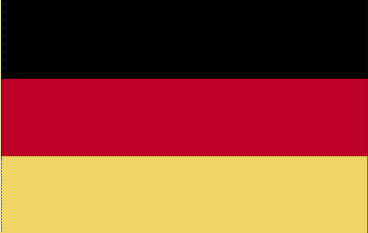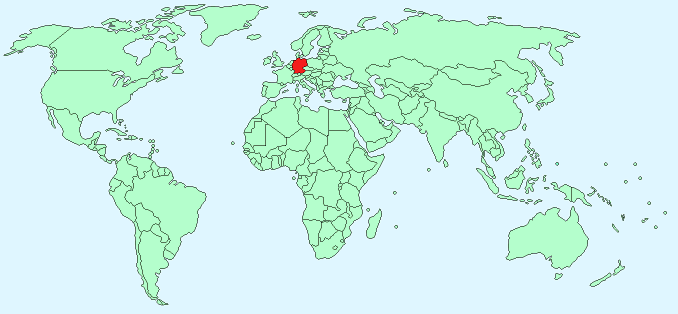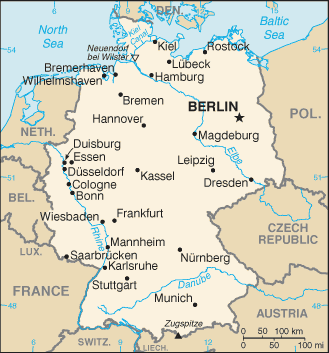Germany


Continent – Europe
Region – Western Europe
Size – 357,021 km²
Geography – lowlands, central area higher, mountains in south
Language – German
Religion – 34% Protestant, 34% Roman Catholic, 3.7% Muslim, 28.3% other
Monetary Unit – Euro
Natural Resources – coal, lignite, natural gas, iron ore, copper, nickel, uranium, potash, salt, construction materials, timber, arable land
Agriculture – potatoes, wheat, barley, sugar beets, fruit, cabbages; cattle, pigs, poultry
Industry – iron, steel, coal, cement, chemicals, machinery, vehicles, machine tools, electronics, food and beverages, shipbuilding, textiles

Neighbouring Countries – Poland, Czech Republic, Austria, Switzerland, France, Luxembourg, Belgium, Netherlands
Population – 80,996,685 (2014 estimate)
Population Growth Rate – -0.18%
Average Life Expectancy – 80.44
Capital City – Berlin (3,562,166)
Highest Mountain – Zugspitze (2,963 m)
Longest River – Rhine (1,320 km)
Climate – Temperate – cool, wet winters -3°C to 9°C, warm summers 12°C to 24°C
Yearly Rainfall – 20 cm (approx)
Plant Life – Beech, oak, spruce, fir, pine, larch, ferns, flowers, fungi, and mosses
Animal Life – deer, wild boar, mouflon, fox, badger, hare
Harvard Reference for this page:
Heather Y Wheeler. (2015). Germany. Available: https://www.naturalhistoryonthenet.com/Facts_Figures/Country_Facts/germany.htm. Last accessed Monday, July 18, 2016
Facts and Figures Pages
